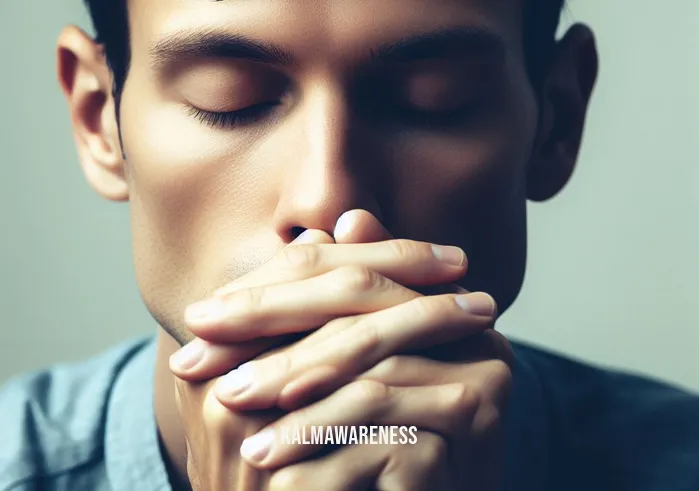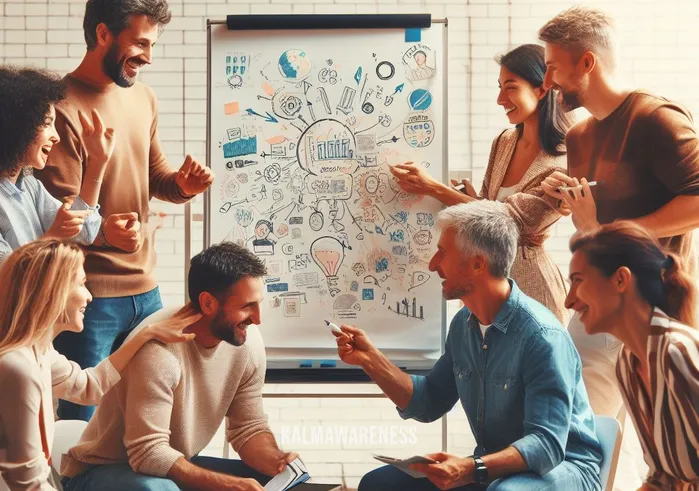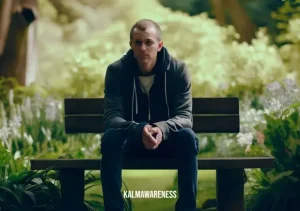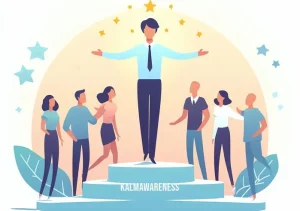How the Body Knows Its Mind: The Intricate Web of Perception and Awareness
Human cognition is a mesmerizing spectacle, an intricate dance between the physical and the metaphysical, the conscious and the subconscious. To truly appreciate its depths and understand how the body knows its mind, one must delve into the layers of neuroscience, psychology, and cognitive science, intertwined with the transformative practices of breathing and meditation. This vast topic unfolds a journey where we’ll explore the mechanisms of perception, the interplay of habitual thinking, and how mindful practices can shape our world.
The Landscape of Perception
Perception is the gateway to our understanding of the world. Through our senses, we receive a barrage of information every second, which our brain processes to form our reality. A fascinating aspect of this is the act of becoming aware through the senses. This sensory awareness defines how we interact with the world around us, shaping our experiences and influencing our reactions.
Moreover, perception is not just restricted to external stimuli. How we perceive ourselves, especially our reflection, can be a journey in itself. Studies in the field of mirror image perceptions in psychology have shown that our reflection can either reinforce our self-image or challenge it. Have you ever pondered over thoughts like “when you look in the mirror, what do you see?” or been troubled by “why don’t I recognize myself in the mirror?“. These questions underline the complex relationship between our physical presence and mental self-image.
Habitual Thinking and Awareness
Human minds are conditioned by habits. These patterns guide our responses, behaviors, and even our thought processes. An insight into habitual thinking definition reveals that these automated responses can sometimes act as barriers, limiting our true potential. To truly comprehend how the body knows its mind, it becomes crucial to acknowledge and address these ingrained patterns.
This brings us to a vital question – am I awake right now? Or are we merely drifting through life on autopilot, guided by these habitual tendencies?
The Role of Meditation and Mindfulness
The practices of meditation and mindfulness act as bridges, connecting the realms of body and mind. Breathing, for instance, is not just a physical act; it’s a lifeline, a rhythmic dance that sustains us. Techniques of neuro-somatic mindfulness emphasize this connection, allowing us to tap into the vast reservoir of awareness within.
In today’s age, where ‘mindfull’ is often confused with ‘mindful’, understanding the difference becomes paramount. A look at mindfull vs. mindful will shed light on how being present in the moment, devoid of overwhelming clutter, can transform our experiences.
Diving deeper, the works of pioneers like Judson Brewer offer profound insights. A glance through the Judson Brewer books will unravel techniques and approaches that have bridged age-old meditation practices with modern neuroscience, creating a fusion that empowers individuals to harness their full potential.
Looking Ahead
Our exploration has just begun. As we proceed, we’ll delve deeper into the realms of the third eye chakra, the mysteries behind inside-out personality types, and how our very approach to life can be transformed by understanding how to see the world. The intricacies of how the body knows its mind are vast, waiting to be unraveled.
The question then becomes, are you ready to embark on this enlightening journey? The secrets of the universe lie within us, waiting to be discovered. To continue this quest for knowledge, understanding, and self-awareness, please proceed to the next chapter, where we’ll dive deeper into these interconnected realms, one insight at a time.

The Nexus of Self-Perception and Inner Awareness
The relationship between our physical and mental realms is a subject of enduring fascination. Central to this is understanding how the body knows its mind, a subject that fuses elements of neuroscience, psychology, and self-awareness practices. In this chapter, we’ll dive deeper into the mechanisms that bridge our bodily sensations with cognitive processes, expanding on the rich tapestry of mind-body connections.
The Role of Mind Icons
A phenomenon known as mind icons offers a gateway into the interconnectedness of our cognitive and physical realms. These symbolic representations serve as mental shortcuts, enabling our brains to process vast amounts of information efficiently. By understanding these icons, we can gain insights into how our minds decode the world around us.
Unraveling Self-Perception through Reflection
Our relationship with mirrors isn’t just physical—it’s deeply psychological. As we stand before a mirror, a myriad of thoughts can emerge. Every time I look in the mirror, it becomes a moment of introspection, reflection, and self-awareness. This self-perception, often rooted in our past experiences, can either empower or limit us. Recognizing and confronting these internal narratives is pivotal to understanding our mind-body connection.
The Colors of Mindfulness
Mindfulness is a spectrum, and just like colors, it has various shades and intensities. A unique way to view this is through the lens of mindful gray complementary colors. Just as colors have complementary and contrasting shades, our mindfulness practices can be varied, complementing and contrasting our daily experiences.
List of Common Misconceptions about Mindfulness:
- Mindfulness is merely about relaxation.
- One needs hours of meditation to be mindful.
- Mindfulness practices are tied only to specific religions or cultures.
- It’s about emptying the mind completely.
- Mindfulness is an escape from reality.
Understanding and debunking these misconceptions is essential in fully grasping how the body knows its mind.
Bridging Neuroplasticity with Perception
One of the remarkable abilities of the brain is its capacity for change. This phenomenon, known as neuroplasticity, underscores the adaptive nature of our cognitive functions. When combined with practices that enhance perception, we can reshape and rewire our brain’s connections.
Table: How Neuroplasticity and Perception Interact
| Mechanism of Neuroplasticity | Impact on Perception | Practices that Enhance It |
|---|---|---|
| Synaptic Strengthening | Enhanced Memory | Mindful Observations |
| Synaptic Pruning | Focused Attention | Meditation |
| Neurogenesis | Improved Learning | Physical Exercise |
| Long-Term Potentiation | Consolidated Knowledge | Sleep and Rest |
| Cortical Remapping | Adapted Sensory Inputs | Sensory Exploration |
By harnessing the synergy between neuroplasticity and perception-enhancing practices, we gain a richer understanding of the interplay between our physical sensations and cognitive processes.
What Lies Ahead
The journey of exploring the depths of how the body knows its mind is akin to navigating an endless ocean, where each wave brings forth new revelations and insights. As we move forward, prepare to delve into the transformative power of making anxiety your superpower and how challenges can be metamorphosed into catalysts for personal growth.
Ready to explore further? The next chapter promises to unravel even more intricacies of the mind-body connection, shedding light on layers yet untouched. Continue reading to further your understanding and quench your thirst for knowledge.

Embodied Inspiration: Unveiling Hope in Mind-Body Connections
In the journey of understanding how the body knows its mind, there emerges an undercurrent of hope and inspiration, a testament to the resilient spirit of human cognition and its boundless potential. As we peel back the layers of mind-body connectivity, we discover stories that inspire, quotes that resonate, and real-life tales of transformation that spotlight the power and potential of embodied awareness.
Hopeful Glimpses from John Welwood
John Welwood is a luminary in the realm of psychology and spirituality. His perspectives intertwine the intricacies of the human psyche with the boundless expanse of spiritual consciousness. Drawing from his wisdom, we find quotes that encapsulate the essence of embodied awareness:
- “Our bodies know they belong; it is our minds that make our lives so homeless.”
- “The challenge of being human is to integrate the spiritual and human dimensions in a conscious and skillful way.”
These quotes emphasize that the true nexus of understanding lies in integrating our bodily experiences with cognitive processes, shining light on the path to wholeness and wellbeing.
Stories of Transformation: From Anxiety to Empowerment
While the theoretical understanding of how the body knows its mind is profound, it’s the real-life stories that breathe life into this knowledge. A compelling narrative can be found in the journey of those who turned to making anxiety their superpower. Instead of being subdued by overwhelming emotions, they harnessed the energy of anxiety, redirecting it to fuel growth, awareness, and transformation.
Ella, for instance, was plagued with panic attacks, each episode leaving her feeling defeated. But with practices rooted in understanding the mind-body connection, she began to perceive her anxiety not as an enemy but as a guide. Each palpitation became a reminder to anchor herself, each anxious thought a signpost directing her inward. Through meditation, breathwork, and heightened body awareness, Ella transformed her relationship with anxiety, using it as a compass to navigate her internal landscape.
Echoes of Awareness from Unlikely Sources
Uncovering happiness in the labyrinth of mind-body connections can sometimes come from the most unexpected sources. For many, the exploration of the third eye chakra has revealed insights into the profound interconnectedness of physical sensations and mental states. Here’s a quote that beautifully captures this sentiment:
- “The body speaks the language of the present moment. By listening deeply, we find the wisdom hidden in its whispers.”
Real-life testimonies, like those of Asha, a yoga practitioner, underline the transformative potential of such awareness. Asha’s practice deepened when she began to focus on her third eye chakra, fostering a heightened sense of body awareness. This not only improved her postures but also brought clarity and mindfulness into her daily life, allowing her to navigate challenges with grace and poise.
Navigating the Horizon
With every story of transformation, every quote that resonates, and every real-life example, we are reminded of the infinite ways the body communicates with the mind, guiding us, shaping us, and inspiring us. This conversation between the physical and the mental is a beacon of hope, offering countless paths to awareness, understanding, and growth.
As we prepare to delve deeper in the next chapter, anticipate a journey into the very heart of embodied cognition, where practices, theories, and experiences merge, offering a panoramic view of the vast landscape of how the body truly knows its mind. Stay with us to continue uncovering the layers of this intricate dance of mind and body.

Deciphering the Mind-Body Code: An Analytical Deep Dive
Throughout our exploration of how the body knows its mind, we’ve traversed philosophical musings, historical insights, and personal anecdotes. As this journey continues, let’s pause to dissect the core tenets that govern this intricate relationship, allowing for a clearer, more structured understanding. Utilizing bullet points and lists, we aim to elucidate complex concepts, ensuring a seamless synthesis of information.
The Foundational Pillars
At the heart of understanding how the body communicates with the mind are certain foundational principles. Let’s deconstruct them:
- Intuitive Awareness: Our body often signals its state to our mind, even before we consciously recognize it. This is evident in the intuitive “gut feelings” we sometimes experience.
- Embodied Cognition: This asserts that our cognitive processes aren’t just confined to the brain. Instead, they are influenced by our physical body and its interactions with the environment.
- Feedback Loops: The continuous dialogue between body and mind establishes feedback loops. For example, a joyful thought can trigger a smile, which in turn amplifies the feeling of joy.
Manifestations of the Mind-Body Connection
Understanding the principle is one thing, but witnessing its manifestations adds another layer of depth. Here are some tangible ways the body and mind interact:
- Physical Reactions to Thoughts: Ponder upon the last time a stressful thought made your heart race. Or when a pleasant memory led to a warmth spreading across your chest.
- Sensory Perception as a Portal: Our senses, constantly feeding information, shape our thoughts and memories. The aroma of a particular food might transport you back to childhood, highlighting how intricately our senses are woven into our cognitive fabric.
- Mindful Responses: With practice, one can develop a more conscious response system. Instead of reacting impulsively, there’s a moment of pause, allowing for more mindful reactions to stimuli. Delving into the subtleties of mindful gray complementary colors, for instance, demonstrates how nuanced our perceptions can become with heightened awareness.
Nurturing the Connection
This profound connection between body and mind isn’t just static; it can be nurtured, honed, and strengthened. Let’s explore how:
- Meditation and Mindfulness: Techniques like those illuminated in Judson Brewer’s books showcase how consistent meditation can deepen the body-mind understanding.
- Physical Practices: Yoga, tai chi, and other body-centric practices facilitate a better dialogue between body and mind, enhancing the feedback loops mentioned earlier.
- Educative Insights: Delving into literature, such as the comprehensive guide on how the body knows its mind, equips individuals with the knowledge to better understand and nurture this connection.
A Glimpse into the Culmination
As we stand on the precipice of the final chapter, a realization dawns: this journey, though vast, is but a drop in the ocean of understanding the expansive dialogue between body and mind. We’ve structured our insights, broken down concepts, and laid bare the foundations. Yet, as with all profound explorations, there are horizons yet untouched, depths yet unplumbed.
In the next chapter, we’ll endeavor to weave together the threads of understanding, offering a holistic perspective on how the body truly knows its mind. Anticipate revelations, epiphanies, and the drawing together of our multifaceted exploration. Stay with us as we approach this enlightening culmination.

Synthesizing the Symphony: A Journey Through Mind-Body Harmonics
Our quest to unearth the profound relationship of how the body knows its mind has been akin to decoding a melodic symphony, where each note, each pause, resonates with meaning and depth. As we stand at the cusp of our journey’s conclusion, let’s indulge in a harmonious recapitulation, absorbing the essence and carrying forth its melody into our everyday lives.
Recapturing the Essence
Perceptual Prodigies: We embarked by exploring the landscapes of perception, realizing that our senses don’t just observe—they interpret, shape, and even transform our realities.
Mindful Mosaics: Delving deeper, we decoded the nuances of mindfulness, debunking myths and embracing its myriad shades, all underpinned by the concept that mindfulness isn’t a mere act—it’s an art.
Inspiring Interludes: Through quotes, anecdotes, and transformative tales, we felt the heartbeats of countless individuals who’ve walked the path, finding inspiration in their steps and solace in their struggles.
Analytical Attunements: Breaking down complex tenets, we delved into the nitty-gritty, structuring our insights and understanding the finer intricacies of the dialogue between our physical sensations and cognitive processes.
The Real-World Reverberations
Knowledge, no matter how profound, resonates best when applied. And the insights on how the body communicates with the mind have myriad real-world applications:
Self-awareness: Recognize and respect your body’s signals. Be it fatigue, hunger, or an intuitive nudge, your body often knows before your mind acknowledges.
Mindful Moments: Cultivate mindfulness in everyday activities. Whether savoring a cup of tea, feeling the breeze, or listening intently in a conversation, every moment offers a portal to presence.
Resilient Responses: Harness the understanding of mind-body feedback loops to foster resilience. Embrace practices that align your body and mind, transforming challenges into opportunities for growth.
A Heartfelt Note to Our Readers
Dear explorer,
Thank you for embarking on this journey with us, traversing the vast landscapes of cognition and consciousness. Your inquisitiveness, your willingness to delve deep, is what makes explorations like these meaningful.
As we conclude, we hope you’re leaving with not just knowledge but a deeper sense of connection—to yourself and the world around you. And while this chapter might be ending, the quest for understanding never truly ceases.
Should you wish to revisit the harmonies and melodies of our journey, or explore the myriad other topics we delve into, our archives are always open, waiting to be explored.
Until our paths cross again in another exploration, remember: Your body speaks, your mind resonates, and in their symphony, lies the essence of being.
With gratitude and warmth,
[Your Magazine Name]
P.S. Keep the spirit of exploration alive! Dive into our latest features or revisit past chapters for a richer understanding. The world of knowledge is vast, and every moment offers a new revelation.



